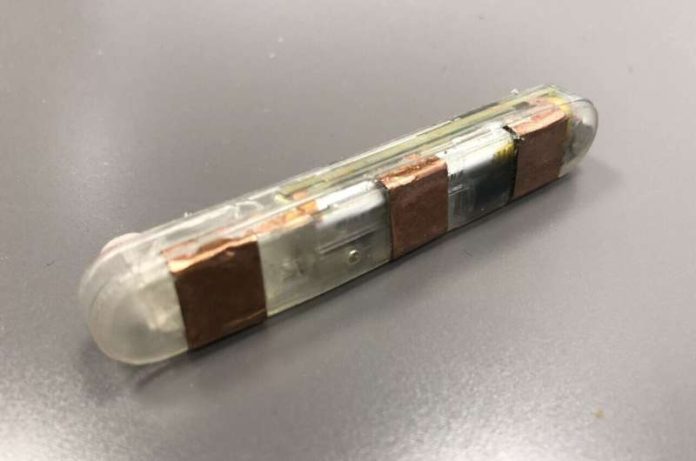
In 2023, over 100,000 Americans died from opioid overdoses.
The most effective way to save someone who has overdosed is by administering a drug called naloxone, but often, help doesn’t arrive in time.
Now, researchers at MIT and Brigham and Women’s Hospital have developed a new device that could change this by automatically detecting an overdose and delivering life-saving naloxone without any delay.
The device, about the size of a stick of gum, is implanted under the skin.
Once in place, it continuously monitors vital signs like heart rate and breathing.
If it detects an overdose, it quickly releases naloxone, a drug that can reverse the effects of opioids, potentially saving the person’s life.
This innovative approach was detailed in a study published in the journal Device.
The researchers demonstrated that the device successfully reversed overdoses in animal tests, providing hope that it could one day be used to prevent overdose deaths in humans, especially those at high risk, such as people who have previously overdosed.
Dr. Giovanni Traverso, an associate professor of mechanical engineering at MIT and a gastroenterologist at Brigham and Women’s Hospital, is the senior author of the study.
He explained, “This device could address a significant unmet need for people struggling with substance abuse and opioid dependency, particularly those at high risk of overdose.”
Naloxone, the drug used by the device, works by binding to opioid receptors in the brain, blocking the effects of opioids like heroin and fentanyl.
When administered by injection or nasal spray, naloxone can restore normal breathing within minutes.
However, many overdose victims are alone and unable to get help in time. Additionally, with the rise of potent synthetic opioids, overdoses can happen more quickly, making timely intervention even more critical.
To tackle this problem, the MIT and Brigham and Women’s team designed an implantable device that is less bulky and more reliable than wearable options.
The device contains sensors that measure heart rate, breathing rate, blood pressure, and oxygen levels. In their animal studies, the researchers monitored how these signals changed during an overdose caused by fentanyl, a powerful opioid.
They used this data to develop a unique algorithm that allows the device to accurately detect an overdose and distinguish it from other conditions like sleep apnea, where breathing is also reduced.
The device also includes a small reservoir that can hold up to 10 milligrams of naloxone. When an overdose is detected, the device activates a pump that releases the drug within about 10 seconds.
In the animal tests, the device successfully reversed overdoses 96% of the time, demonstrating its potential to save lives. “We created a closed-loop system that can detect the onset of an opioid overdose and automatically release the antidote, leading to recovery,” Dr. Traverso said.
The researchers believe this technology could be particularly useful for people at the highest risk of overdose, such as those who have already experienced one. The next steps include refining the device to make it as user-friendly as possible, including finding the best location for implantation and making the device smaller.
Dr. Peter Chai, an associate professor of emergency medicine at Brigham and Women’s Hospital and co-author of the study, emphasized the importance of this technology in addressing the opioid crisis.
“Our vision for this device is to integrate it into harm-reduction strategies, efficiently and safely delivering naloxone to prevent deaths from opioid overdoses and offering support to those with opioid use disorder,” he said.
The research team hopes to begin testing the device in humans within the next three to five years. They are currently working on miniaturizing the device further and improving its battery life, which currently lasts about two weeks.
This implantable device could become a vital tool in the fight against the opioid epidemic, providing a life-saving intervention for those most at risk of overdose.
If you care about pain, please read studies about vitamin K deficiency linked to hip fractures in old people, and these vitamins could help reduce bone fracture risk.
For more information about wellness, please see recent studies that Krill oil could improve muscle health in older people, and eating yogurt linked to lower frailty in older people.



